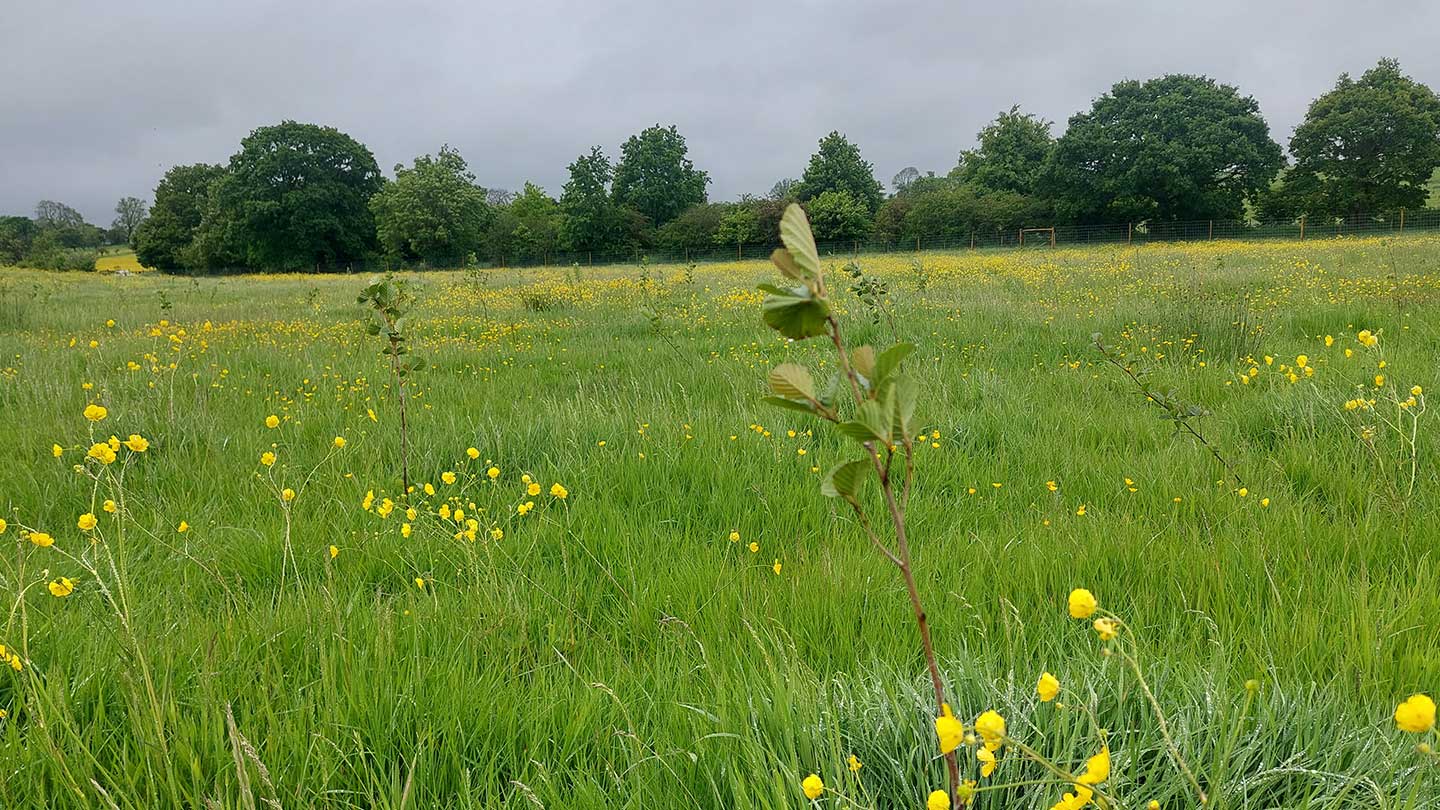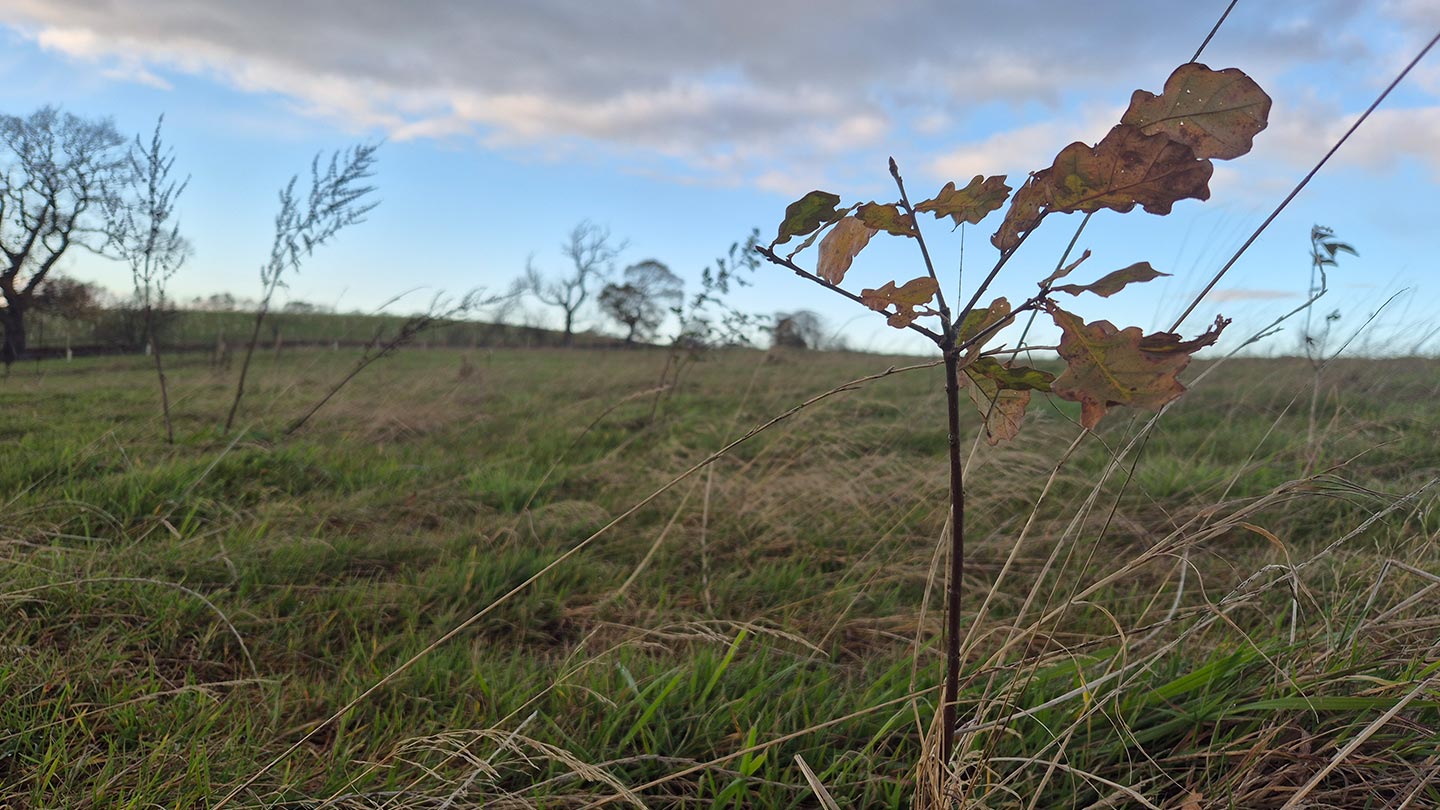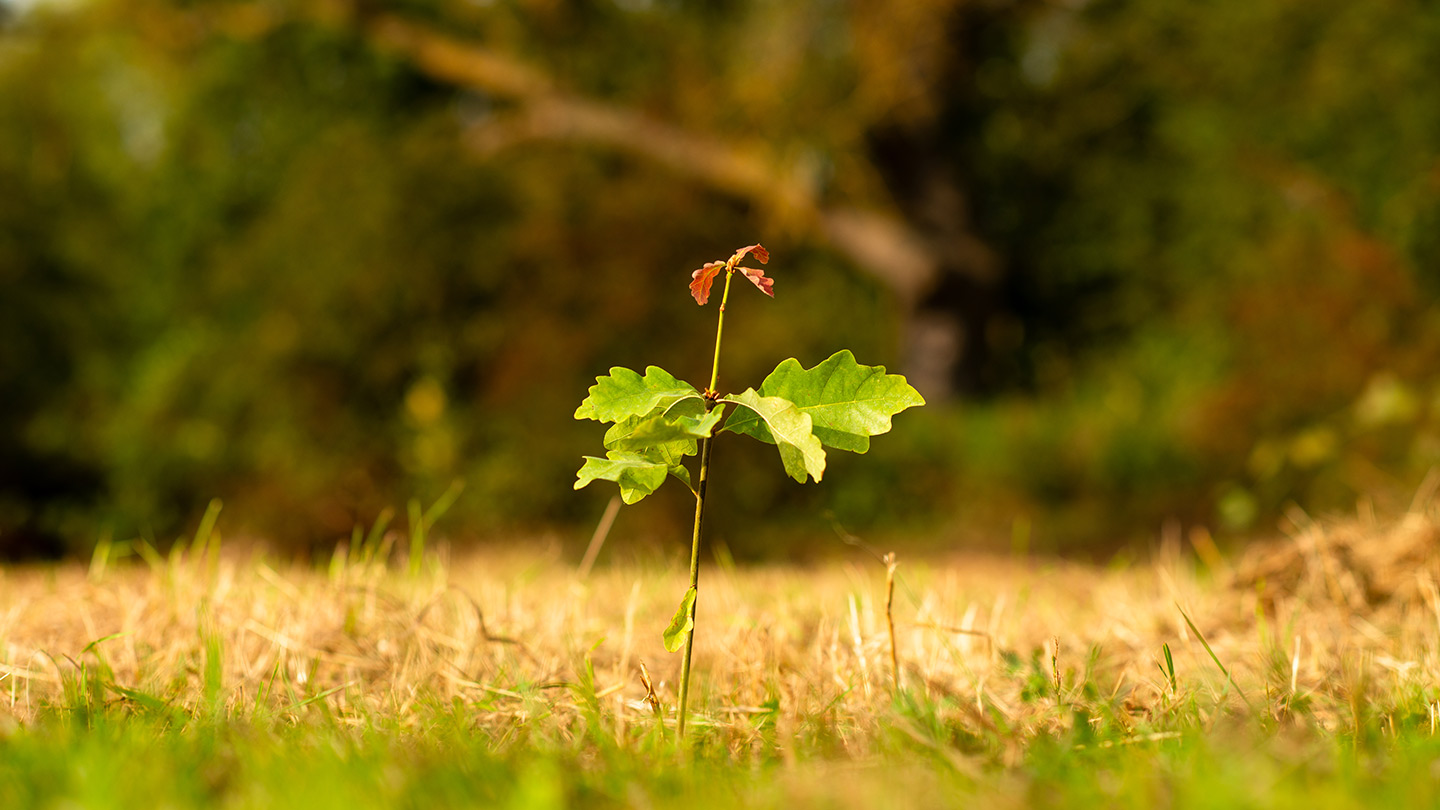Leathley woodland: boosting biodiversity in the Northern Forest
Nestled within the Northern Forest, the Leathley woodland creation project shows how habitat restoration can align with climate action. A grant from the Woodland Trust’s Defra-funded Grow Back Greener scheme has allowed Alistair Wood to convert 11.25 hectares of his land into a diverse mosaic of woodlands, wetlands and grasslands. This innovative project showcases how thoughtful design and sustainable practices can achieve ambitious habitat creation goals.
Project funding
The Grow Back Greener grant fully funded the project, covering all planting costs and a maintenance budget. Over 13,800 native trees and shrubs have been planted to create diverse habitats, each carefully designed to support wildlife and build ecological resilience.

New woodlands, wetlands and grasslands were created. Credit: Jack Hirst / WTML
Focus on biodiversity
A cornerstone of the project was its emphasis on biodiversity. The site incorporates a wide range of habitats, which supports a variety of species.
Woodland
Made up of entirely native species, the new woodland is ecologically appropriate and resilient to future climate change. Shrubby edges, varied densities and transitional habitats add structural diversity, enhancing the site's value for wildlife.
Wetlands
Ten small, semi-temporary ponds were created to attract amphibians, waterfowl and aquatic invertebrates, and a wetland area was created at the north end of the site.
Grasslands
Open spaces and areas of grassland have been included to encourage pollinators and other invertebrates. This also provides a broader ecosystem, which will support a wide array of flora and fauna.
Mature trees
The site has also been designed to enhance and protect the existing mature and veteran trees by surrounding them with buffer zones and supportive shrub species.

New woodland was entirely made up of native tree species. Credit: Jack Hirst / WTML
Sustainable planting practices
A standout feature of the Leathley project is its commitment to sustainability. Traditional tree planting often relies on plastic tree guards to protect young saplings from browsing animals like deer and rabbits. However, these guards contribute to plastic waste and can pose a visual impact.
Instead, the landowner used higher planting densities with an expectation of higher than normal losses and added fencing to exclude browsing herbivores. This innovative approach not only reduces the environmental footprint but also aligns with the project's ethos of working harmoniously with nature.
A model for woodland creation
The Leathley woodland creation project is a great example of what can be achieved through innovative design, sustainable practices and a commitment to biodiversity. By prioritising nature-based solutions and ecological integrity, the project demonstrates the potential of the Northern Forest initiative to drive optimal woodland creation schemes, as well as showing what’s possible with funding from the Grow Back Greener scheme.
Want to know more? You can find out more information about this project in our longer case study.
Be part of the Northern Forest
Want to plant trees? Whether you’re creating new woodland or extending an existing site, you can reap a whole host of extra benefits.
- Boost biodiversity.
- Provide shelter.
- Protect your soil.
- Fight flooding
Your new trees could be part of the Northern Forest and make a difference for people, wildlife and the environment in the North of England.

Credit: Phil Formby / WTML
Get started today
Speak to an expert adviser from any Northern Forest partner for no obligation advice and support.